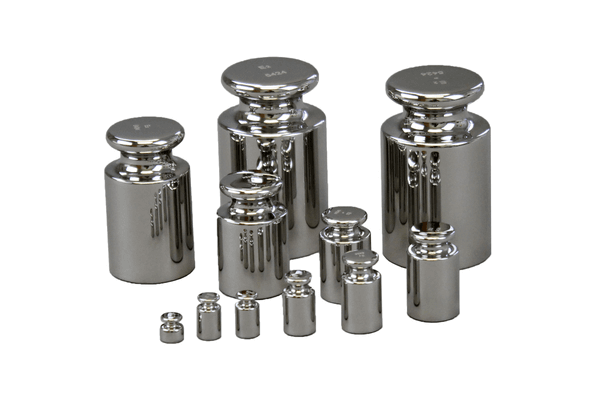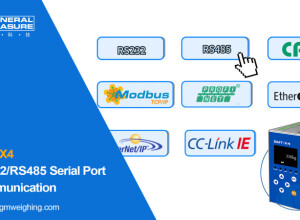Inscale Scales Ltd (United Kingdom) - Because an analytical balance is one of the most precise pieces of weighing equipment available, correct analytical balance calibration is essential to ensure they maintain accurate results. In this blog, we’re going to take an in depth look at how to calibrate an analytical balance, the difference between external and internal calibration, the importance of calibraton and more.
What does it mean to calibrate a balance?
Analytical balance calibration is best described as a process of checking the accuracy of a balance, often using a predefined calibration weight in the case of an anaytical balance with external calibration. This weight has a known value, and when placed onto the analytical balance can be used as an aid to help users understand whether the reading they are getting is correct. For example, if you placed a 1 gram calibration weigh onto an analytical balance, you would want your balance to read exactly 1g in order for it to be suitable calibrated.
Why do we need to calibrate an analytical balance?
Simply put, correct analytical weighing balance calibration is necessary because there is no logical reason to use an inaccurate scale. Inaccuracy’s in weighing results can lead to problems and complications further down the line, even if it is just by a small fraction. Here are some of the main benefits from using a correctly calibrated analytical balance:
Reliable results:
Accurate results when weighing is vital as it ensures that you can trust the information and that your results
Saves waste and extra cost:
Inaccurate results can lead to measurements having to be repeated, products having to be recalled and incorrect results having to be discarded – all of which costs time and money.
Safety:
Analytical balances are used in a number of industries in which inaccurate results could be potentially dangerous, including medical, veterinary and food and drink manufacturing. Knowing how to calibrate an analytical balance correctly and doing it frequently is paramount to ensuring customers are kept safe at all times.
Detecting ageing equipment:
All equipment ages, even an analytical balance! The internal components will get worn over time and begin to give inaccurate results if not correctly calibrated. Frequent calibration will also allow users to tell when their analytical balance is beginning to get too old, as their weighing results will get more erroneous and require calibration more often.
Types of calibration:
Internal calibration – Many analytical balances come with internal calibration, whereby calibration can be carried quickly, often with just the click of a button. Calibration weights are not necessary for this.
External calibration – External calibration is a manual method which uses approved calibration weights to set the standard.
If you're undecided as to whether you need internal or external calibration, please see our helpful guide: Internal or External Calibration: Which is Right for You?
How to calibrate an analytical balance step by step:
These analytical weighing balance calibration guidelines are for instruments that require external calibration. Some balances come with internal calibration which should be carried out according to the relevant user manual.
Before starting, you will need: an analytical balance, set of approved calibration weights, tweezers, protective gloves and a stiff cleaning brush/wire brush.
- Set up your analytical balance on a stable work surface (an anti-vibration table is recommended for best weighing results).
- Check that you have a full set of analytical balance calibration weights - there are several classes of weights to choose from and you need to ensure that your weights match the weighing requirements of the balance being used. See our range of calibration weight sets for more information.
- Whilst wearing gloves and using a stiff cleaning brush, carefully remove any dust or dirt from the calibration weights as this may distort weighing results.
- Once the weights have been cleaned, ensure that the balance has the correct weighing units enabled and that the calibration mode has been set (each model is different so please consult the specific manual for your balance for further information).
- Tare or 'zero' the balance.
- Using tweezers, place the first calibration weight onto the analytical balance weighing pan - The balance will now adjust to the calibration weight.
- Once the weight reading displayed matches that of the calibration weight, remove the weight from the weighing pan.
- Repeat this procedure for each calibration weight, ensuring that the balance returns to zero after each weight is removed from the pan.
- Once complete, exit calibration mode.
How often should an analytical balance be calibrated?
The frequency of your analytical balance calibration is dependant on a number of different factors:
Environment:
Analytical balances are sensitive and therefore susceptible to outside interference from their environment. More frequent analytical balance calibration is required if you work in a hot, dirty or humid environment, or somewhere that is prone to vibrations or static electricity.
Frequency of use:
It’s simple really; if you use your analytical balance more often, every day for example, then you should calibrate more often.
Importance of accuracy in your work:
If you work in a profession where a slightly inaccurate result has the potential to cause major issues – such as medical or pharmaceutical industries where safety is a concern – you must calibrate daily or weekly. If 100% accuracy is not necessary, a less frequent analytical balance calibration routine is acceptable.
It should also be noted that your analytical balance should also be calibrated if it is moved to a new location, newly installed or after any maintenance work.
























Interested? Submit your enquiry using the form below:
Only available for registered users. Sign In to your account or register here.